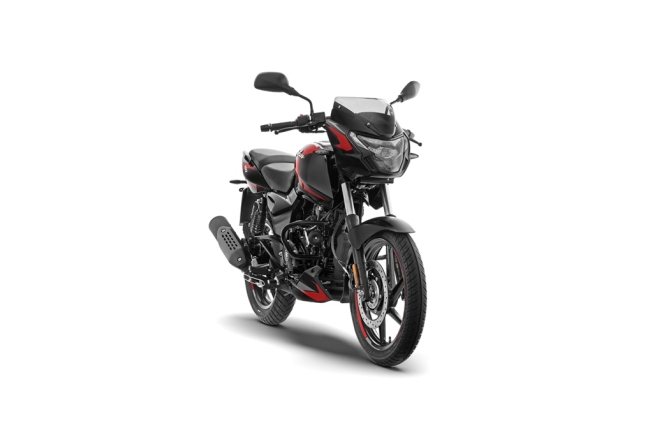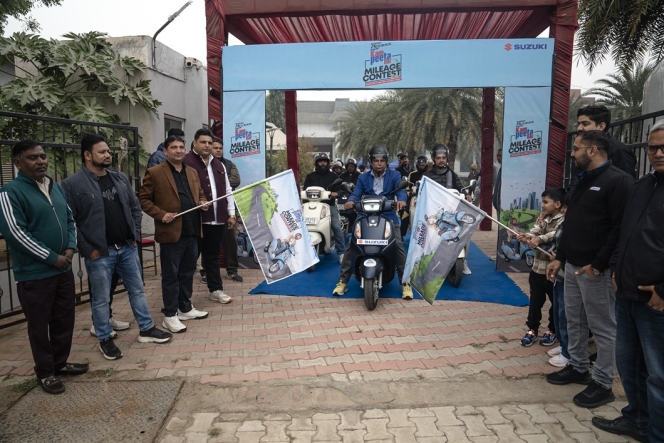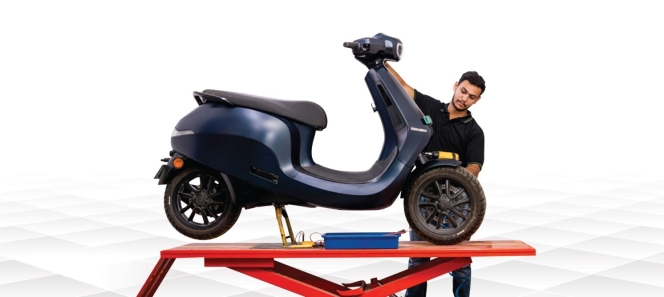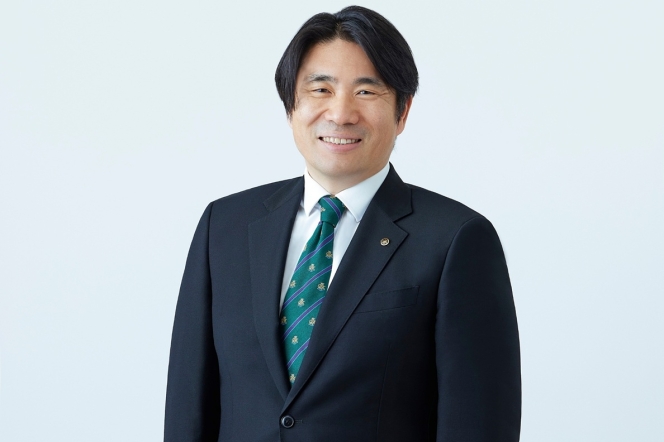India’s Two-wheeler Domestic Production Dips to 1.83 crore in FY21: Report
- By MT Bureau
- January 17, 2022

The domestic production of the two-wheeler segment dropped to about 1.83 crore in FY21 as against the production of about 2.10 crore in FY20, financial services credit rating company Infomerics Valuation and Rating said in a report.
According to the Industry Outlook Automobile Industry report, the Indian automobile industry is valued at more than INR 8 lakh crore. Its turnover contributes approximately 7.1 percent of overall GDP, 27 per cent of industrial GDP and 49 per cent of manufacturing GDP.
With the pandemic causing havoc in the automobile industry, the numbers have plummeted in FY21 for both production and sales, compared to the figure in FY20.
The study said two-wheeler is the most significant contributor to the automobile sector. It contributes about four-fifth to the overall industry, followed by passenger vehicles, contributing approximately 13 per cent to the industry.
Following some positive steps from the government, the automobile industry emerged as the top sector during the first four months of FY2021-22 with a 23 per cent share of the total FDI equity inflow, the study pointed out. The reforms by the government in FDI policy, investment facilitation and improving ease of doing business are some of the reasons for the increased FDI inflow, it said.
Along with enhancing FDI, the government has floated INT 25,938 crore worth of new production-linked incentive (PLI) scheme for the auto sector. The PLI Scheme for Automobile and Auto Components Industry will lead to a new investment of more than INR 42,500 crore, incremental production of over INR 2.3 lakh crore for five years. It is also expected to create additional employment opportunities for more than 7.5 lakh jobs.
The government also extended the second phase of the Faster Adoption and Manufacturing of Hybrid and Electric vehicle (FAME) scheme by two years to 31 March 2024. Besides, the Central government approved the INR 76,000 crore scheme to boost semiconductor and display manufacturing.
However, the study pointed some significant challenges for the industry in future. It said there was a mismatch between funds allocated and disbursed. The Union government has only disbursed about 10 per cent (about INR 820 crore) of the total subsidies out of INR 8,596 crore earmarked under the FAME-II scheme. EV makers pointed out that the aggressive localisation criteria for qualifying for FAME-II were a reason for the limited disbursal under the scheme. The semiconductor shortage has also been adversely affecting the industry. The automotive component industry, which had a turnover of INR 3.40 lakh crore (USD 45.9 billion) for the April 2020-March 2021 period, posted a de-growth of 3 per cent, compared with the turnover in the previous year.
The report said the restructuring of Ford’s Indian operations caused massive anxiety for dealers and customers. The future of about 170 Ford dealers with a combined investment of INR 2000 crore and about 40,000 employees is uncertain, the study pointed out.
Some foreign original equipment manufacturers (OEMs) who exited in the last four years include General Motors in 2017, MAN Trucks in 2018, United Motor Cycles in 2019 and Harley Davidson in 2020. Accordingly, the FADA sought to introduce legislation, viz., Automobile Dealers Protection Act, to create an enabling environment for automobile dealers. Industry body FADA also indicated that it was the worst festive season in the decade, with overall vehicle registrations falling 18 per cent in 2021 as against the festive season in 2020.
However, the report highlighted that the EV segment and the sector growth is optimistic and is also likely to get an impetus by the government’s series of incentives.
Besides, the report is not very optimistic about the overall industry in the short term due to the semiconductor shortage and infrastructure challenges on the EV front.
The industry faces challenges from other factors like triple-digit fuel prices and the sudden exit of big companies. The report suggested that the industry needs to work on the semiconductor issue and try to develop native capacities, adding that the government needs to work in tandem and consider reducing fuel prices. (MT)
Bajaj Auto Intros Updated Pulsar 150 Range At INR 108,772
- By MT Bureau
- December 24, 2025

Bajaj Auto, one of the leading two-wheeler and three-wheeler manufacturers, has updated its popular Pulsar 150 motorcycle range. The updates include the introduction of LED headlamps and LED blinkers to the model, which the company states is intended to improve visibility and usability while maintaining the vehicle's design identity.
The updated range is available at the following ex-showroom Delhi prices – Pulsar 150 SD at INR 108,772, Pulsar 150 SD UG at INR 111,669 and Pulsar 150 TD UG at INR 115,481.
The motorcycle retains its frame and stance, though Bajaj has introduced new colour options and graphics. The Pulsar 150 continues to utilise DTS-i (Digital Twin Spark-ignition) technology, which uses two spark plugs to ignite the air-fuel mixture in the combustion chamber, intended to improve combustion efficiency and power output.
The update focuses on integrating modern lighting components into the existing platform, which originally established the sports motorcycling segment in India.
Sarang Kanade, President, Motorcycle Business Unit, Bajaj Auto, said, “The Pulsar 150 has defined performance motorcycling for generations. With this update, we have preserved its classic character while thoughtfully adding modern LED lighting, ensuring the Pulsar 150 remains relevant, recognisable and Definitely Daring.”
Suzuki Motorcycle India Conducts Access Mileage Contest In Palwal
- By MT Bureau
- December 24, 2025

Suzuki Motorcycle India (SMIPL), the subsidiary of Suzuki Motor Corporation, Japan, held a mileage contest for the Suzuki Access scooter in Palwal. The event involved 35 participants, including current owners and prospective buyers, to test the fuel efficiency of the scooter under city driving conditions.
The initiative is part of the brand’s ‘Pickup Bhi, Mileage Bhi’ strategy, which focuses on balancing engine performance with fuel economy and build quality.
The event was organised in partnership with RV Suzuki in Palwal. The participants, all of whom had purchased their scooters within the last year, followed a specific testing protocol: a designated 20-kilometre circuit on city roads, scooters were operated on a full tank, then refilled at the end of the journey to calculate the exact fuel consumed. Potential customers were provided with test rides and the opportunity to interview existing owners regarding reliability and comfort.
Deepak Mutreja, Vice-President, Sales & Marketing, Suzuki Motorcycle India, said, “The Suzuki Access Mileage Contest places a strong focus on fuel efficiency, bringing our brand promise of ‘Pickup Bhi, Mileage Bhi, Shandar Quality Ke Sath’ to life. By riding on city roads, participants experience the scooter’s real-world mileage. Along with mileage, customers also get to experience the quality and reliability that have made the Access a trusted choice of over 6 million customers. We appreciate the participation from customers in Palwal. We will continue to extend such on-ground initiatives to more cities across India, allowing customers to connect closely with out two-wheelers and witness their performance firsthand.”
The company intends to expand these on-ground initiatives to additional cities across India to demonstrate the performance of its two-wheeler portfolio in local environments.
Ola Electric Launches Hyperservice Centres With Same-Day Service Guarantee
- By MT Bureau
- December 23, 2025

Bengaluru-based electric vehicle maker Ola Electric has expanded its Hyperservice initiative by launching dedicated centres that offer a same-day service guarantee for eligible customers at no extra cost. The company will upgrade its existing service infrastructure into Hyperservice Centres, beginning with a facility in Indiranagar, Bengaluru.
The expansion is intended to reduce service lead times and increase transparency through a digital workflow.
The Hyperservice Centres include several facilities for customers and technical upgrades for vehicle maintenance. The waiting area includes a lounge and Wi-Fi connectivity for customers. Real-time visibility of the servicing stages is provided via the Ola Electric app. Going forward, the company plans to upgrade selected centres across India in the coming weeks.
Ola Electric has also transitioned Hyperservice into an open platform. This move makes the company’s spare parts, diagnostic tools, and training modules available to independent garages, mechanics, and fleet operators.
Under this model, parts can be purchased directly through the Ola Electric app or website. This is intended to allow garages and customers to access components without the use of intermediaries.
“As part of the ongoing service upgrade we are reimagining many of the fundamental aspects of the service experience. We see it as a core part of Ola ownership, and it needs the same level of innovation as the product itself. With Hyperservice Centres, we are setting a new benchmark – same-day service guarantee. At no extra cost for any customer. This is about using technology, process redesign and scale to remove friction and give every Ola customer a faster, simpler and more transparent service experience,” said the company in a statement.
The company has rolled out an in-app service appointment feature nationwide. The tool allows users to select service slots, track the status of their vehicle, and manage maintenance requirements within the unified platform to replace traditional booking methods.
Hajime Aota Appointed Chairman Of Yamaha Motor India Group
- By MT Bureau
- December 23, 2025

India Yamaha Motor, one of the leading two-wheeler manufacturers in the country, has announced the appointment of Hajime Aota as the Chairman of Yamaha Motor India Group, effective from 1 January 2026. He is set to succeed Itaru Otani, who held the position since November 2024.
The appointment comes as Yamaha continues its focus on the premium segment and digital integration within the Indian two-wheeler market.
Aota joins the Indian operations with experience in corporate strategy, planning and venture business development. He has held leadership roles in Japan, the United States and the United Kingdom.
Prior to this role, Aota served as Executive Officer at Yamaha Motor Co, and Chief General Manager of the Corporate Strategy Centre at the global headquarters in Japan. In these positions, he managed corporate strategy, sustainability and digital transformation.
He has also worked as Chairperson of Yamaha Motor Ventures & Laboratory Silicon Valley (YMVSV) overseeing investments in robotics, transportation, fintech and health technologies. He has also contributed towards Yamaha Motor Group’s long-term growth strategy.
Aota is a graduate of Keio University and holds a qualification from the Program for Leadership Development at Harvard Business School.
Hajime Aota, said, “I am very excited to begin my journey in India, one of the world’s most dynamic and diverse two-wheeler markets. The rapidly evolving aspirations of Indian consumers, especially the youth, align strongly with Yamaha’s focus on premium products, innovation, and a customer-centric approach. Leading Yamaha in India is a significant responsibility, and my focus is on strengthening the brand by delivering products that seamlessly combine Yamaha’s global engineering excellence with the evolving needs of Indian riders. I look forward to working closely with our teams and partners to drive sustainable growth and reinforce Yamaha’s presence in this important market.”






Comments (0)
ADD COMMENT